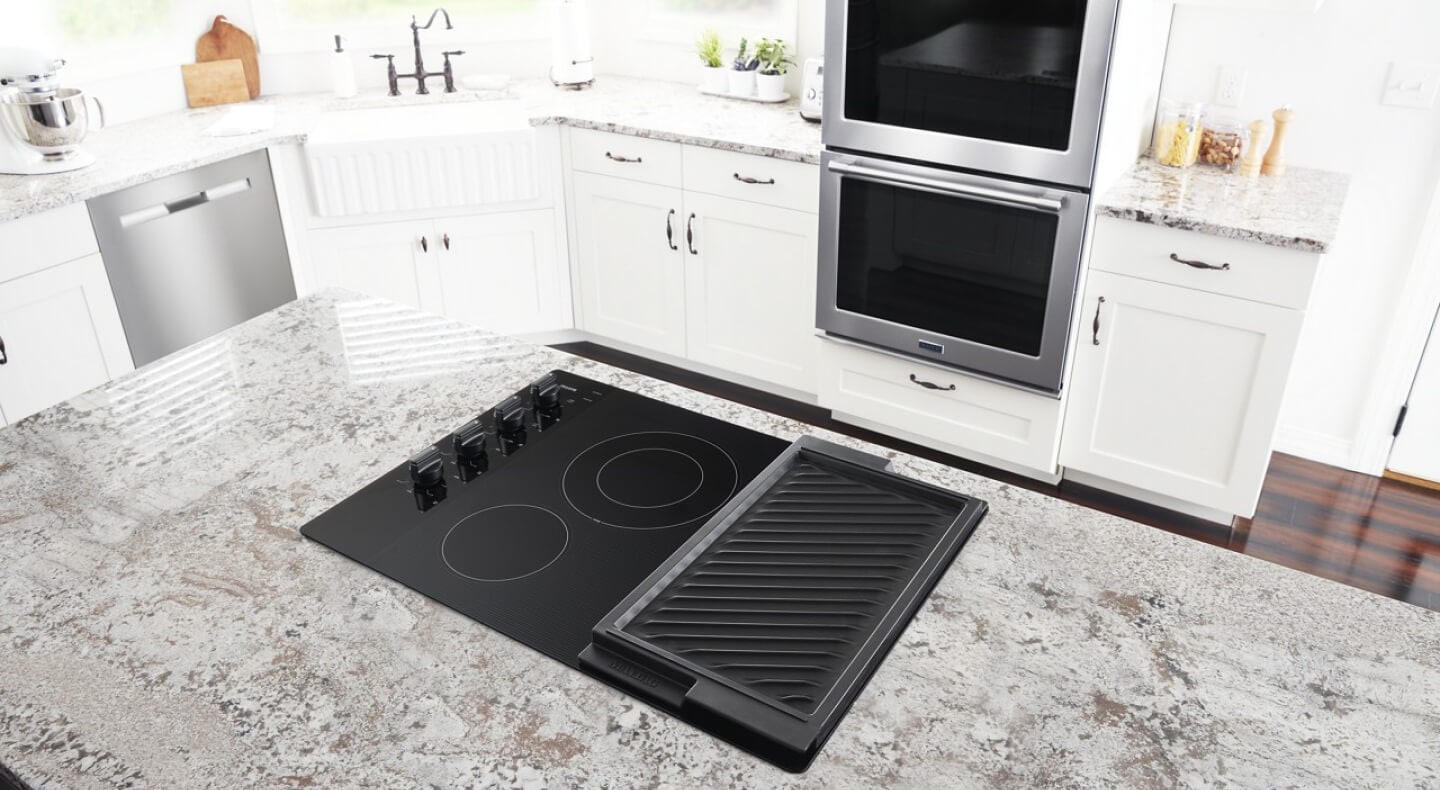
SLOW COOKING TIPS: EASY WAYS TO MASTER HANDS-OFF MEALS
If you’d rather not spend your evenings hovering over the stove, slow cooking can be your shortcut to hearty, hands-off dinners. With the right approach, you can use your oven or stove to deliver rich, flavorful meals—no fancy gadgets needed. Just get it going, and get on with your life until dinner time. Here’s how to make slow cooking work for you.
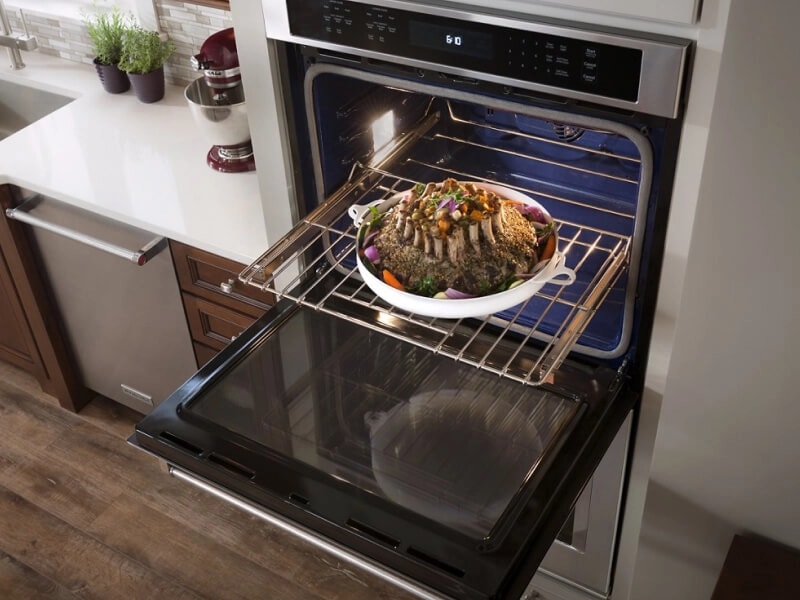
WHAT IS SLOW COOKING?
Slow cooking is a method where food simmers at low temperatures for several hours, letting flavors meld and tough cuts of meat turn tender. While slow cookers are popular, there are other slow cooking methods you can try without one. Your oven or stovetop—along with an oven-safe heavy pot or dutch oven—can do the job just as well. Simply prep your ingredients, set the temperature low, and let time do the heavy lifting—no constant stirring or checking required.
BENEFITS OF SLOW COOKING
Effortless meals: Prep in the morning, eat at night.
Budget-friendly: Tough, inexpensive cuts of meat can often become tender.
Big flavor: Long, slow cooking builds deep, rich taste.
- Less cleanup: Fewer pots and pans, especially with a Dutch oven.
SLOW COOKING METHODS: OVEN VS. STOVE VS. SLOW COOKER
Whether it’s with a slow cooker, on the stovetop or in the oven, slow cooking offers a delicious meal with minimal oversight. A slow cooker is a countertop appliance specially designed for the task with settings ideal for cooking low and slow. Slow cooking in the oven delivers steady, even heat and helps lock in moisture for deep, developed flavor. The stovetop can speed things up and is great for reducing sauces, but it needs a closer eye to avoid scorching or uneven cooking.
HOW TO SLOW COOK WITHOUT A SLOW COOKER
No slow cooker? No problem. For oven slow cooking, preheat to 200-300°F, use a heavy, lidded pot, and cook for several hours, according to your recipe. On the stove, use low heat and a heavy pot, keeping the lid on and stirring occasionally. Read on for more tips on how to use either slow cooking method.
SLOW COOKING IN OVEN
Slow cooking in the oven works really well for large cuts of meat, versus using the stovetop, which is often preferable for slow cooking sauces, stews and soups. In general, when slow cooking in your oven, you will set your oven to a low temperature (often 200-300°F), use a heavy, lidded pot such as a Dutch oven, place the pot on your middle oven rack, and let your meal cook gently for hours, according to your recipe. This method is great for braises, stews and roasts.
SLOW COOKING ON STOVE
For slow cooking on a stove—which is great for stews, soups and sauces—be sure to follow your recipe, using the lower heat settings with a heavy-bottomed pot. Keep the lid on to trap moisture and stir occasionally to help prevent sticking, especially for beans or grains.
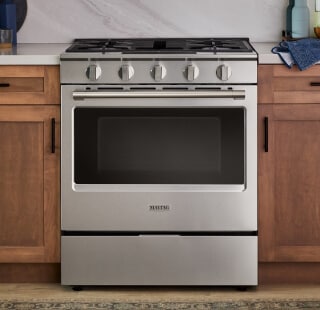
Will your range fit?
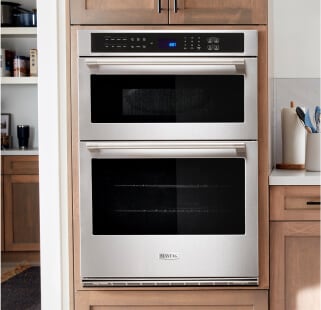
COMPARE DIFFERENT TYPES OF OVENS
WHAT CAN YOU SLOW COOK?
Meats: Chuck roast, pork shoulder, brisket, short ribs, chicken thighs, etc.
Vegetables: Potatoes, carrots, onions, parsnips, etc.
Beans and legumes: Dried beans can become creamy and tender.
- Soups and stews: Any recipe that benefits from long, gentle simmering.
SHOP MAYTAG® RANGES
Maytag brand offers dependable ranges to give you the heat you need for slow cooking, baking and everything in between. Select models feature Air-Powered Cooking Cycles, with Air Baking, Air Roast, Air Broil and Air Reheat. A powerful third heating element circulates air throughout the oven cavity for consistent results—no matter the meal. Maytag® has a range that can help you get that roast done by dinnertime.
7 SLOW COOKING TIPS FOR OVEN AND STOVE
The next time you decide to cook a roast, try some of these slow cooking tips before you begin:
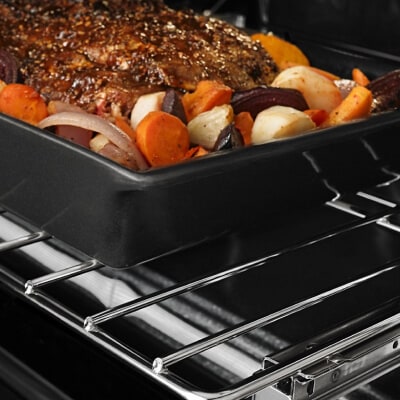
TIP #1: CHOOSE THE RIGHT CUTS AND VEGGIES
Tough, fatty cuts like chuck roast or pork shoulder often become tender and flavorful after hours of gentle heat. Root veggies such as potatoes and carrots hold up well and absorb flavors. Avoid lean meats, which can dry out, and always thaw ingredients before cooking to help ensure even results. Softer veggies like zucchini or peas should be added near the end so they don’t turn to mush. Cut meat and vegetables into similar-sized pieces to promote even cooking. Choosing the right ingredients up front helps deliver satisfying results and hearty meals with minimal effort.

TIP #2: BROWN MEAT AND SAUTÉ VEGGIES FIRST
Spend a few minutes browning meat and sautéing aromatics before slow cooking to build a rich flavor base. Browning develops a savory crust, while sautéing onions and garlic brings out their sweetness. Use a Dutch oven or heavy pot to do this step, then add liquids and other ingredients. Scraping up any browned bits adds extra depth. While it’s tempting to skip this step, it makes a noticeable difference in taste and appearance, giving your slow-cooked meals more complexity without much extra work.
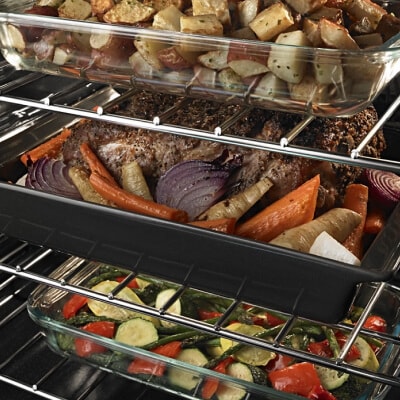
TIP #3: LAYER INGREDIENTS STRATEGICALLY
Stacking ingredients in the right order helps everything cook evenly. Place root vegetables like potatoes and carrots at the bottom of the pot, where they’ll get the most heat. Layer meat on top so its juices drip down, flavoring the veggies. Lastly, add delicate veggies or herbs at the top to help keep them from overcooking. This approach helps prevent sticking and burning, especially on the stove.
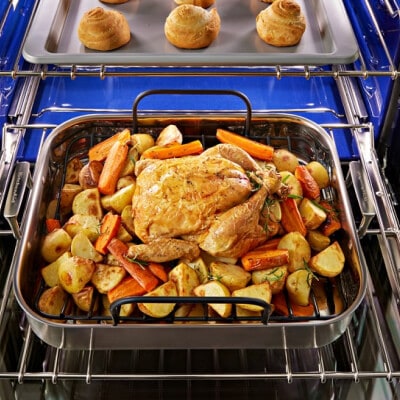
TIP #4: DON’T OVERCROWD YOUR POT
Avoid filling your pot more than two-thirds full. Overcrowding can prevent heat and steam from circulating, leading to poorly cooked food. If you have a large batch, split it between two pots or cook in batches. Giving your ingredients room to cook means better texture, flavor and a more satisfying slow-cooked meal.
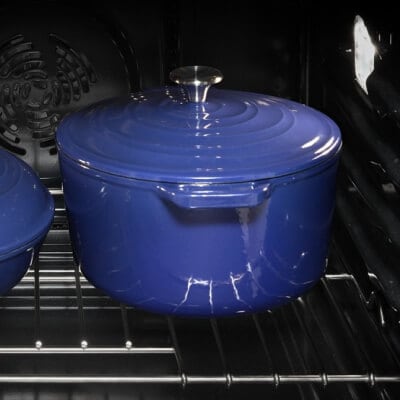
TIP #5: KEEP THE LID ON
Resist the urge to lift the lid frequently while slow cooking. Each peek lets out heat and steam, extending cooking time and potentially drying out your food. Whether using the oven or stove, keeping the lid on helps maintain a consistent temperature and moisture level, ensuring your meal turns out tender and flavorful. Only remove the lid near the end to add finishing touches like dairy or fresh herbs. Trust the process—slow cooking is meant to be hands-off for a reason.
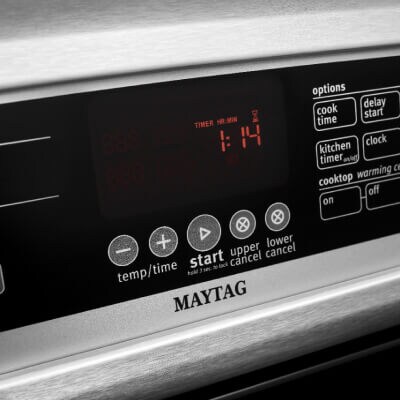
TIP #6: LOW AND SLOW
The general rule for tasty slow cooking is to keep it “low and slow.” The precise times and temperatures will vary, based on your particular recipe or cut of meat, but resist the urge to raise temperatures to “speed up” the process. It is not uncommon to cook a roast at 225 degrees for a full eight hours in your oven. (The exact time will fluctuate depending on the size and type of the roast and the desired level of doneness.)
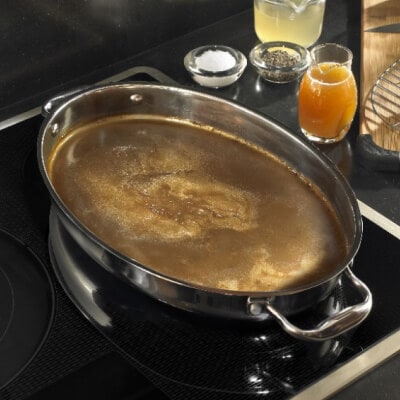
TIP #7: DON’T FORGET THE LIQUIDS
Roasts and other cuts of meat generally need liquids like water, wine or broth during their lengthy cooking session, resulting in mouth-watering meat that falls apart on the fork. Follow your recipe closely when it comes to liquids, and try not to peek into the pot too frequently, as this lets precious moisture escape.
SHOP MAYTAG® WALL OVENS
Maytag® wall ovens offer flexibility and space for all your cooking needs, including slow cooking. Select models feature the Precision Cooking™ System, which combines Precise Preheat, Precise Bake and Precise Broil functions to deliver quick, evenly cooked meals in your oven.
COMMON SLOW COOKING MISTAKES TO AVOID
When it comes to learning how to slow cook, there are a few things you want to avoid, including:
Using frozen ingredients: Always thaw meat and veggies first for more even cooking and tastier results.
Adding delicate veggies too early: Save peas, spinach and fresh herbs for the end.
Repeatedly opening the oven door to check on progress: This can throw off the temperature. And if your oven isn’t holding temperature, it can throw off your timing. Here’s what to do if your oven isn’t getting up to temperature or is overheating.
- Don’t overcrowd: Filling the pot too full can result in poorly cooked food.
SHOP MAYTAG® COOKTOPS
A reliable cooktop can be key for stovetop slow cooking. Maytag® cooktops provide convenient features to help you slow cook, simmer, braise and more. Select cooktops feature Temp Cook™ Induction Technology, which automatically adjusts heat to help keep temps steady, so your pancakes and grilled cheeses come out consistently—no matter how many you make.
WHAT IS THE BEST WAY TO SLOW COOK?
The best way to slow cook depends on your personal preferences, but often involves using a heavy, lidded pot on low heat—either on the stove’s lowest setting or in an oven set between 200-300°F. Brown meat and sauté aromatics first, layer root veggies at the bottom, meat on top, then cover and cook slowly, for as long as your recipe calls for. Keep the lid on and check only near the end for tender, flavorful results with minimal effort.
DO POTATOES GO ON TOP OR BOTTOM OF MEAT WHEN SLOW COOKING?
Potatoes and other root vegetables should go on the bottom of the pot to help ensure they cook evenly and soften properly. Meat goes on top so its juices drip down, flavoring the veggies. Delicate vegetables and herbs should be added near the top to help avoid overcooking.

Maytag® kitchen ranges
POWERFUL COOKING FEATURES THAT WORK, MEAL AFTER MEAL
Maytag® ranges offer powerful cooking features and next-level cleanability to help make mealtime less of a chore
HOW DO YOU COOK A SLOW COOKER RECIPE IN THE OVEN?
To cook a slow cooker recipe in the oven, there are a few things to keep in mind. Ovens often cook at a warmer temperature than slow cookers, which means that recipes may possibly finish sooner in the oven. So if your recipe calls for 6-8 hours on low in a slow cooker, it may possibly only take 2-3 hours at 325°F in an oven, depending on the food and the recipe. Always carefully check for doneness if you think your food is done sooner than your recipe calls for. In addition, slow cookers are often great at sealing in moisture during the cooking process, while ovens frequently cause more evaporation. So be sure to check on your food as it cooks and if the liquids are running low, add more as needed.
Slow cooking is about making life easier, not harder. With these slow cooking tips, you can prep your meal, walk away, and come back to a dinner that’s ready when you are—no extra stress required.

MAYTAG® PERFORMANCE LINEUP
POWER PACKAGES THAT GET THE JOB DONE
Explore Maytag® kitchen appliances designed to power through mealtime and cleanup and look good while doing it
Was this article helpful? Pass it on
DISCOVER MORE FROM MAYTAG BRAND
1. Disclaimer details placeholder

